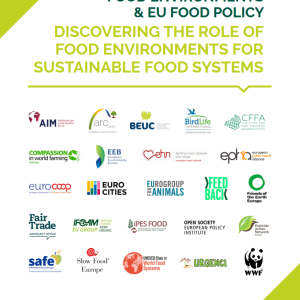
This policy briefing produced by the EU Food Policy Coalition provides an evidence-driven review of how food environments - i.e. the physical, economic, political and socio-cultural context in which people make decisions about consuming food - shape food demand. It argues that food environments are key to transforming the food system, by making healthy, sustainable foods the options that are the most available, accessible, affordable, enjoyable and widely promoted.
The image below illustrates the drivers influencing food environments:

The briefing identifies seven priority areas that policies on food environments should consider:
- Food characteristics such as nutritional composition, environmental performance and animal welfare.
- Food labelling.
- Food promotion, i.e. marketing and advertising.
- Food provision through public procurement, restaurants, fast food outlets, etc.
- Food retail and distribution systems.
- Food prices and the incentives they create to consume different types of food.
- Food trade and international agreements.
Read the full report, Food Environments & EU Food Policy: Discovering the role of food environments for sustainable food systems, here or here (PDF link). See also the TABLE explainer How are food systems, diets, and health connected?












Post a new comment »